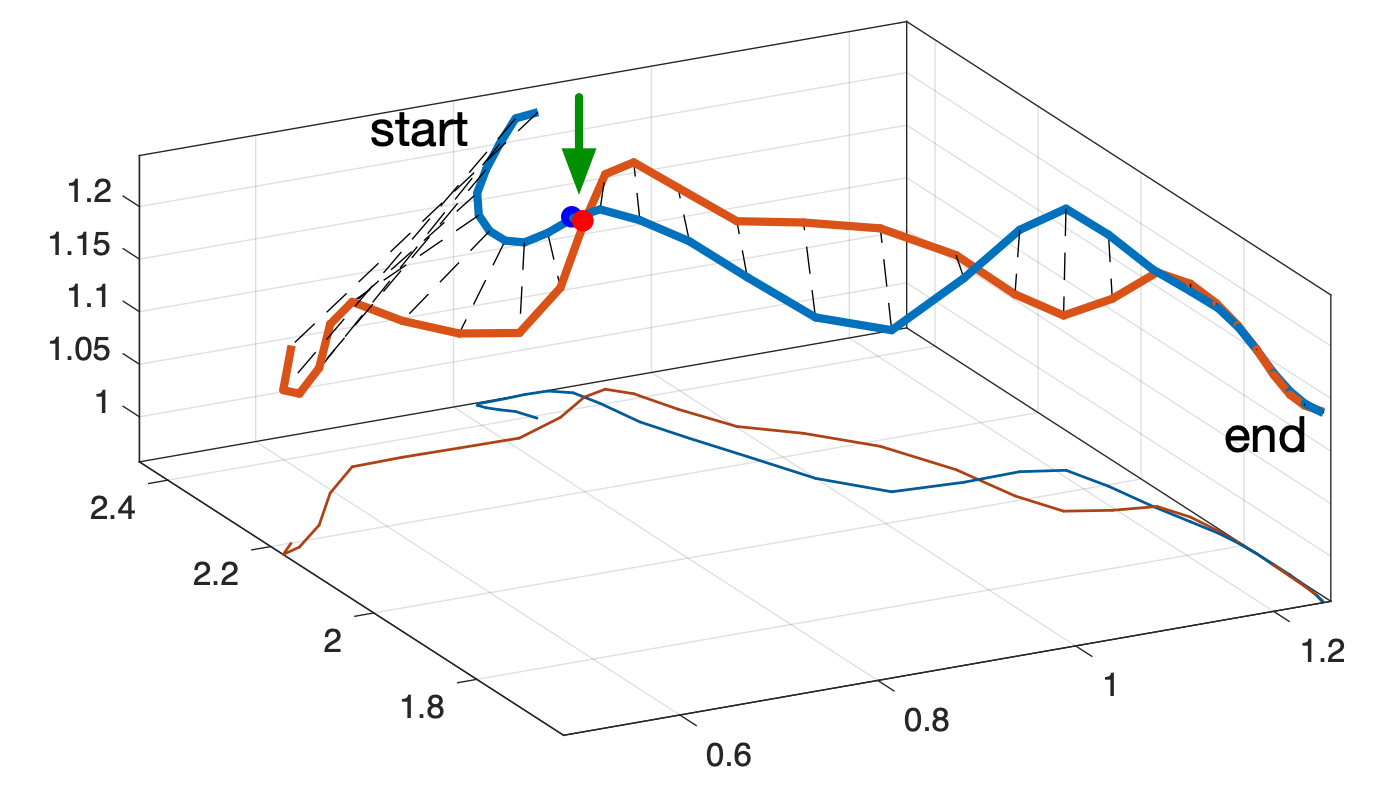Biological swarms show how complex group-level behaviors can emerge from completely distributed local interactions. We have studied the mechanism of such local interactions among swarming mosquitoes, and used the insights we gained to design distributed algorithms for cooperative target pursuit.
Mosquito Inspired Pursuit
To gain insights into how to control a group of small and agile aerial vehicles equipped with rudimentary sensors, we studied the swarming behavior of male mosquitoes in collaboration with a biologist (N. Manoukis) at the U.S. Department of Agriculture. When a male mosquito perceives a female, it initiates pursuit and exhibits a criss-crossing flight pattern.

Inspired by this engagement, we designed a control algorithm for a small and agile vehicle to capture a maneuvering target. We proved the robustness of the controller to sensor noise using the concept of ultimate boundedness from control theory, and also demonstrated the theoretical results by experiments using autonomous hovercraft.
- Mosquito-inspired pursuit law: J-2 [TCST]
The hovercraft on the left is the pursuer. It uses its onboard sensor and microcontroller to intercept the moving target fully autonomously.
Mosquito Inspired Swarming
Before the males perceive a female, they exhibit random oscillatory motion. This randomness makes it difficult to extract any “intent” of the mosquitoes from their kinematic data. We used a velocity cross-correlation function to detect and analyze the time varying velocity-alignment interactions among males, and mathematically characterized their behavior with a physics-based particle model [J1].
This analysis gave us unique insight into proposing a computationally efficient and effective approach to cooperative target pursuit. We also demonstrated that the velocity-alignment behavior can be used as a way of indirect communication among the pursuers, and it effectively increases their perceptual range [J3]. This research contributed to the field of cooperative multi-agent control and also to the understanding of the species of mosquito known as a malaria vector.
- Data analysis of mosquito swarm: J-1 [SciRep14]
- Physics-based modeling of mosquito swarm: C-2 [CDC15]
- Mosquito-inspired swarming & pursuit strategy: J-3 [AURO19]